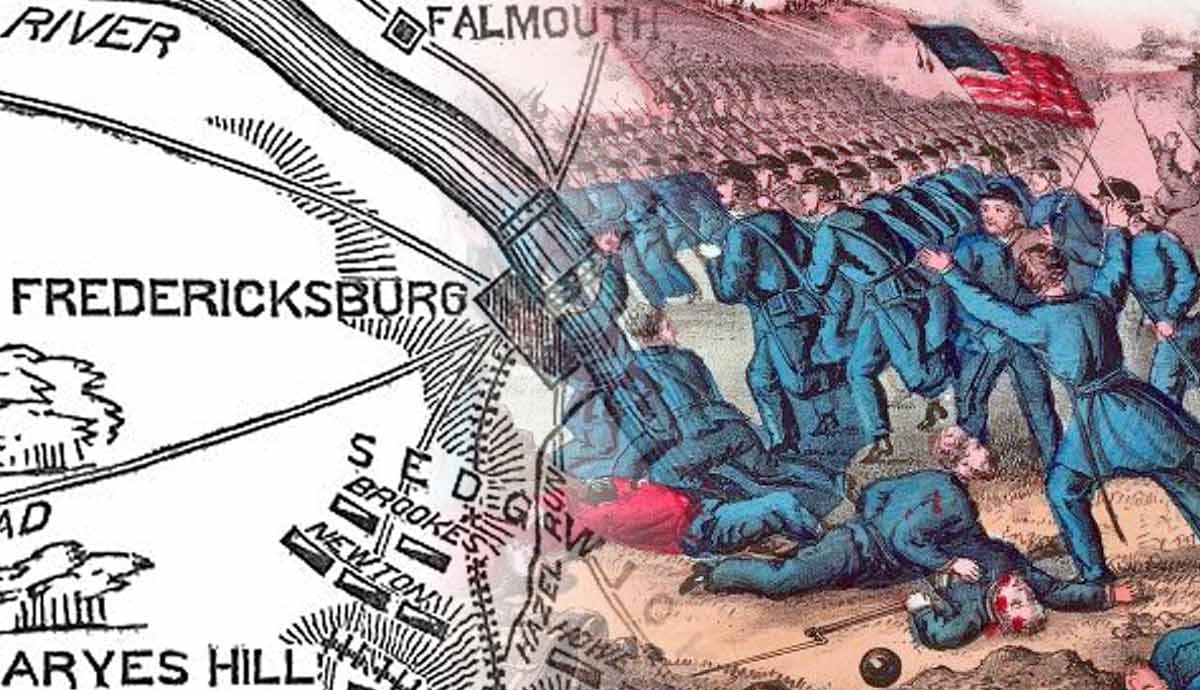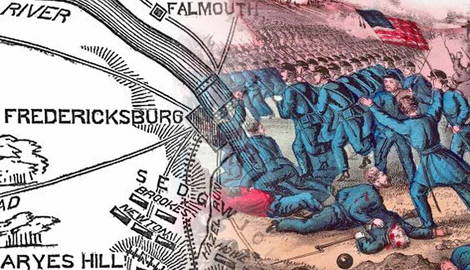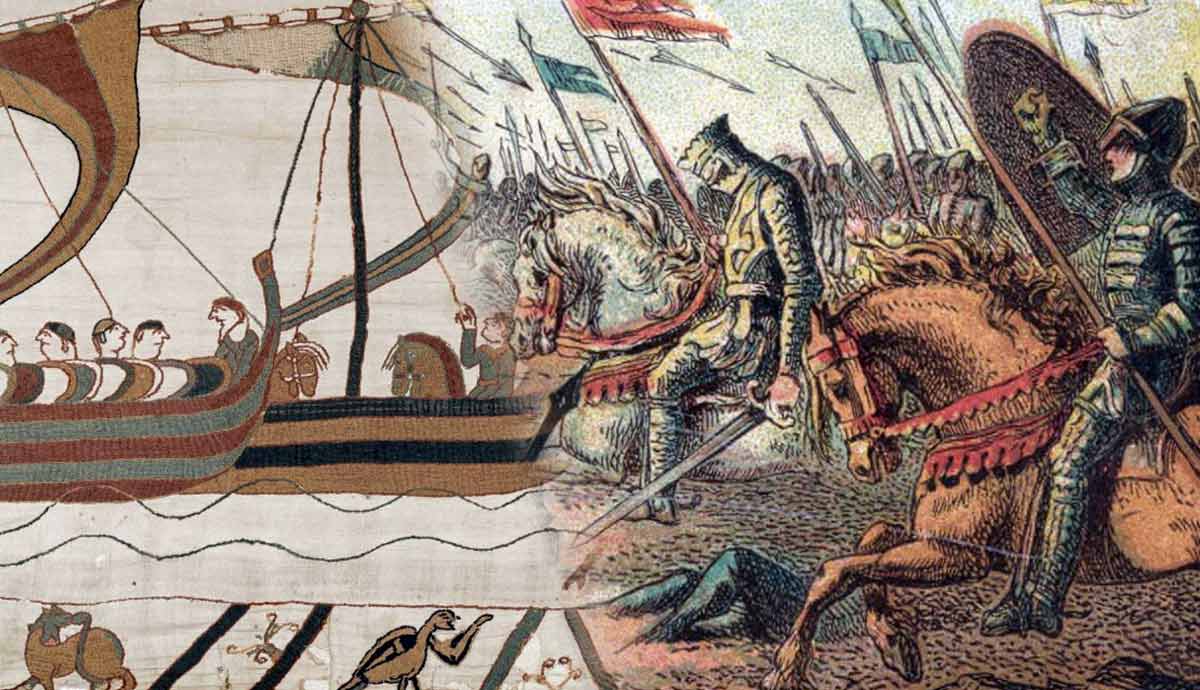
At the Battle of Antietam in September 1862, the Union won a great victory and prevented the Confederacy from securing diplomatic recognition from European powers. Three months later, however, public pressure was on the Union to show that it could destroy a Confederate army. Thus far, the Confederates had always been able to retreat relatively unscathed. Union general Ambrose Burnside went on the offensive, hoping to score a decisive victory.
Victory Goes to the Confederacy

The Battle of Fredericksburg was a significant victory for the Confederacy and perhaps its most lopsided victory in a major battle. Fredericksburg was one of several attempts by the Union to break up the stalemate at the Virginia border. US President Abraham Lincoln had selected Union General Ambrose Burnside as the more aggressive replacement for General George McClellan, whom Lincoln blamed for not sufficiently pursuing the retreating Confederates after the Battle of Antietam in September 1862.
With a large force of some 120,000 men, Burnside set off to finally accomplish what had been attempted before at the Battle of First Manassas in July 1861 and the Battle of Second Manassas in August 1862. Burnside’s plan was to move as quickly as possible to surprise the Confederates and hopefully break through to an open path toward Richmond, Virginia. On December 11, 1862, the battle began when Burnside’s forces crossed the Rappahannock River and landed at Fredericksburg, Virginia. Union forces used frontal wave attacks against entrenched and experienced Confederate defenders, resulting in few gains and massive casualties. By the evening of December 14, a clear Confederate victory emerged, and Burnside retreated the following day back across the river.
Timeline of the Battle of Fredericksburg

By November 17, 1862, General Burnside had stationed his army of three oversized divisions on the northern side of the Rappahannock River. For over a week, he waited for pontoon bridges that would allow his men to cross in force into the town of Fredericksburg, Virginia, to arrive.
On December 11, New York engineers began trying to construct the pontoon bridges but quickly came under Confederate gunfire. The Union responded with a massive artillery bombardment of the town of Fredericksburg, Virginia, hoping to dislodge the Confederate sharpshooters who were preventing the assembly of the pontoon bridges. Despite some 8,000 shells battering the town, the Confederate sharpshooters remained.
Union forces now used pontoon boats to cross the river, arriving at Fredericksburg and engaging in street-to-street urban combat. The city was taken, and the bridges were completed to allow the rest of Burnside’s army to cross by December 12.
Early on the morning of December 13, the Union forces began to advance out of Fredericksburg, only to encounter well-entrenched and experienced Confederate defenders led by General “Stonewall” Jackson and his superior officer, Robert E. Lee. Multiple frontal assaults by Union troops failed, resulting in massive casualties.
By the next day, December 14, Burnside accepted that he had lost after his subordinate officers convinced him that future attacks would be fruitless.
What Caused the Battle of Fredericksburg?

The Battle of Fredericksburg was caused by mounting political pressure to secure a victory against the Confederacy. Despite having driven back the Southerners at Antietam in September, many were frustrated that General George McClellan had allowed Robert E. Lee’s forces to return home relatively unscathed. In the elections of 1862 in October and November, anti-war Democrats made political gains, worrying Lincoln’s administration. If the war continued to go sluggishly, Democrats might win enough power to force negotiations with the Confederacy.
Thus, McClellan’s replacement, Ambrose Burnside, knew exactly what was expected of him: strike quickly and hopefully open a path to Richmond to end the Confederacy once and for all. President Abraham Lincoln approved General Burnside’s plan to move against Lee immediately. One reason the battle erupted was the oncoming winter. The pontoon bridges had arrived slowly, and Burnside either needed to attack immediately or wait for better weather in the spring of 1863. Worried that Lincoln would be upset by a delay of several months, Burnside chose to attack on December 11.
Why Was the Battle of Fredericksburg Significant?

The Battle of Fredericksburg was significant for multiple reasons. First, it was the largest battle in terms of forces committed (actual troops in battle) during the Civil War. Second, it was the Confederacy’s most lopsided victory in a large-scale battle, with the South suffering only half as many casualties as the North. The Union’s poor performance in the battle signaled that there would be no quick end to the war, underscoring previous failed attempts at rushing on Richmond. As a result, Lincoln’s political woes continued, with critics going so far as to call the president weak.
In the South, the victory did much to reinvigorate morale. Despite the Confederacy’s ailing economy and lack of foreign recognition and aid, many felt that superior Southern military leadership and fighting skills would win the war. Thus, Fredericksburg contributed to Southern enthusiasm that led to the Battle of Chancellorsville the following May, which then led directly to the decision to invade the North again at Gettysburg. Fredericksburg and Chancellorsville can be seen as the one-two punch that locked in the Confederate decision to go on the offensive again in 1863.
5 Facts About the Battle of Fredericksburg

1. Casualties
Casualties at Fredericksburg were relatively low for such a large number of troops committed, coming in at only 18,500 reported casualties. However, the figure was very lopsided, with Union troops suffering some 12,500 casualties compared to only about 5,300 for the Confederacy. This is not to imply that the combat was not intense—it was very intense but occurred in a small area. However, despite the North suffering more than twice the rate of casualties as the South, its vast advantage in manpower and industrial output quickly replenished the Army of the Potomac.
2. Commanders
Union forces were led by Ambrose Burnside, whose distinctive style of facial hair is now named after him. A native of Indiana, Burnside graduated from West Point during the Mexican-American War as part of the Class of 1847, thus making him younger than most of his general officer compatriots. Despite being relieved from leading the Army of the Potomac after his loss at Fredericksburg, Burnside went on to become a US Senator from the state of Rhode Island.
Confederate forces were led by Robert E. Lee, commander of the Army of Northern Virginia. Seventeen years older than Burnside, Lee saw action in Mexico in 1847 and became renowned as a military officer. Despite being offered command in the Union upon the outbreak of the Civil War with the Battle of Fort Sumter, Lee chose instead to fight for his native state of Virginia as part of the Confederacy. Lee died five years after the end of the Civil War, during which time he became president of Washington College in Lexington, Virginia.
3. Number of Forces Involved

Roughly 200,000 troops were present at the Battle of Fredericksburg, with up to 123,000 from the Union and some 78,000 from the Confederacy. However, not all these forces engaged in fighting, with reports indicating that only 114,000 Union troops were engaged against about 72,000 Confederates. Compared with earlier battles in the Civil War, these were staggering numbers of troops that significantly outmatched both Second Manassas and Antietam.
4. Visiting Fredericksburg, Virginia Today
Today, the battlefield can be seen as part of the Fredericksburg & Spotsylvania National Military Park. Due to the large number of Civil War engagements fought in the area, it can be difficult to separate each battle into its own distinct landmark. The specific battlefield for the Battle of Fredericksburg is now located near downtown Fredericksburg, Virginia. Visitors can take a driving tour and visit individual monuments dedicated to skirmishes and participants during the battle.
5. Trivia: First Large-Scale River Crossing While Under Fire
The Battle of Fredericksburg saw many rather unique features, including urban combat. One true first, however, is a large-scale river crossing while under fire. When Union troops tried to cross the Rappahannock River by pontoon boat on December 11, 1862, they were fiercely attacked by Confederate sharpshooters stationed in the town of Fredericksburg. The bitter fighting during the river crossing later contributed to Union forces pillaging the town in anger, which was considered the worst war looting up to that point in the conflict.
Aftermath of Fredericksburg: Stalemate in Virginia

Burnside’s defeat at Fredericksburg was tragic and humiliating, leading the general to briefly consider a January offensive. The “Mud March” of January 1863 was a brief but miserable attempt to once again outpace Robert E. Lee and pass him to get to Richmond. After two days of marching in a torrential downpour, Union forces spotted the Confederates already in position. The offensive was aborted, and Burnside would later be relieved of his command to be replaced by General Joseph Hooker.
The stalemate between the Union’s Army of the Potomac and the Confederacy’s Army of Northern Virginia would continue until the final months of the war when the exhausted South could no longer maintain defenses. A later attempt to attack Lee, Hooker’s offensive at Chancellorsville in May 1863, would also result in failure and add to Lee’s glowing reputation as a military strategist. As with Burnside before him, Hooker was forced to retreat back across the Rappahannock River, leaving the Confederates celebrating their success…but suffering irreplaceable casualties.










